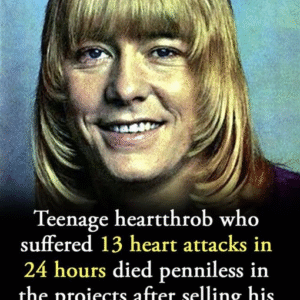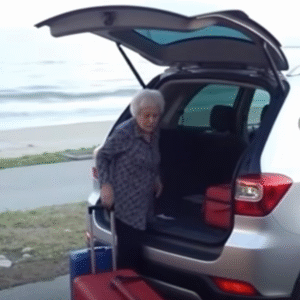A Bus Stop with Its Own Rhythm
The bus stop at Willow and 3rd had a unique charm. On summer mornings, sunlight filtered through leaves, casting lace patterns on the pavement. In winter, steam from the nearby bakery wrapped the glass shelter in a warm embrace. It was a simple spot — three seats, a curling route map, and a dented trash can — yet the people of Maplebridge saw it as a quiet ritual.
Mrs. Ada Whitaker’s Daily Visit
Every weekday at 8:15 a.m., Mrs. Ada Whitaker arrived in her signature blue wool coat. She wore it even in summer because its pockets perfectly held two paperbacks and a bag of day-old bread for sparrows. Her hat featured a tiny silk flower. She greeted the bus driver by name. Sometimes she boarded the bus; sometimes she didn’t. What mattered was her steady presence, as constant as the clock tower on Main Street.
When Mrs. Whitaker Didn’t Come
One bright September Tuesday, Mrs. Whitaker didn’t appear. At first, no one noticed. People were late, the bus was early, and the bakery was busy. But Lily Tran, a nineteen-year-old barista, spotted the empty blue coat and placed a cup of tea on the bench. She found a blue scarf with a note: “If you’re cold, this is yours. —A.W.”
The Search Begins
Emma Brooks, a junior reporter, got a message from Lily. Everyone in town knew Mrs. W, the bus stop’s unofficial patron saint. Emma headed out with her camera to cover a human-interest story. She met the bus driver, Sam, who confirmed Mrs. Whitaker’s routine but said she wasn’t on the bus that day.
Clues and Community Stories
Emma found a second scarf, honey-colored with the same note from Ada. People shared stories of Ada’s kindness: a pencil for a shy boy, advice to reconnect with a sister, a knitted hat for a child. At the library, Emma discovered a shoebox full of notes Ada had collected — thank-yous and stories from the town.
Ada’s Message
Among the notes, Emma found a letter from Ada herself. She wrote that if someone was reading it, she had disappeared in some way but left stories behind. She urged the town to keep kindness alive and to “ask each other.”
A Town Unites
Lily put up a sign: “Looking for Ada. Tell Us Your Stories.” People began leaving messages, creating a patchwork of shared memories. The bus driver, mail carrier Jorge, and even high schoolers joined the effort, turning the bus stop into a hub of warmth and connection.
Following Ada’s Trail
The community mapped out places Ada touched — the park where she taught paper cranes, the market where she gifted poems, the thrift store with scarves like hers. Emma called the city’s non-emergency line to report Ada missing, highlighting her importance to the town.
A Postcard and New Clues
Jorge found a postcard from Ada: “I am not lost. I am elsewhere. The city knows where.” Emma and the team realized Ada’s message was about places, not just people. They created a map of kindness, connecting the dots of Ada’s influence.
The Heart of the Community
At the center of the map was the Community Center — the place Ada led with quiet love for years. It was where strangers became neighbors through simple acts of kindness.
A New Chapter
Emma, Lily, Jorge, and others visited the center. They found it open and welcoming, sunlight spilling inside like a warm invitation. Ada’s spirit lived on, reminding everyone that kindness and community endure, even when the people who inspire them move on.
Discovering the Warm Room
Inside the community center, a blue scarf with Ada Whitaker’s signature tag lay on a table. Next to it, a note read:
“Welcome to the Warm Room. If you are cold, there are scarves. If you are lonely, there is tea. If you are new, someone will say your name.”
Following a hand-drawn arrow on the wall, a small group passed the painting class, the gym, and a bulletin board filled with flyers. The arrow ended at a door labeled “Storage”—a door that was always locked. Sam, the bus driver, tried the handle. It opened.
A Cozy Sanctuary
Inside wasn’t clutter or cleaning supplies. Instead, chairs, a sofa, tables, mugs, scarves, and a softly glowing lamp filled the space. A painted sign read:
“THE WARM ROOM — A PLACE TO WAIT TOGETHER.”
Ada sat in a chair by the lamp. Though smaller sitting down, her blue eyes shone with kindness and quiet strength.
Ada’s Story
Ada smiled. “You found it,” she said softly. Lily hugged her, Emma wiped tears, and Jorge asked if she was okay. Ada thanked him for “watching the sparrows.”
When Ms. Carter asked what the room was, Ada answered, “What you made—what we made—when I stopped waiting at the bench and let the community notice.”
Ada explained she began waiting at the bus stop after her husband died. “Waiting isn’t nothing,” she said. “It’s where kindness gets time to knock.” She knitted scarves that first winter, leaving them anonymously for those in need. She started a shoebox of notes at the library—letters and stories people never said aloud.
A Small Disappearance with Big Purpose
Ada admitted she stopped coming every morning—not gone, but “a small disappear.” She wanted the city to notice her absence and find the Warm Room she’d arranged. She left clues: scarves, notes, messages through friends and neighbors.
The Room’s Mission
The Warm Room was ready “for anyone who needs a place to wait.” Ada named examples—a teen avoiding hard memories, a woman waiting for a job call, a man too proud to admit loneliness. It was a place for kindness to quietly grow.
A Growing Community
More chairs, mugs, tea, and stories arrived. Mr. Albright brought folding chairs. Others brought mugs, cookies, board games, and plants. The room quickly filled with warmth, laughter, and shared kindness.
Rituals and Connection
By December, the Warm Room hosted “The Seven Minutes” ritual—giving time to listen, share, and offer small kindnesses without pressure or advice. Emma started a column sharing these true stories of waiting and connection.
When a storm knocked out power one evening, the room’s lamps went dark—but candles lit the space. Strangers shared warmth, jokes, and company. Ada returned, quietly teaching knitting and sharing seven-minute moments. The community kept the room alive through storms and silence.
A City Transformed
The Warm Room sparked other warm spots around town—cafés, shops, schools—marked by “WARM STOP” signs. At the bus stop, a plaque honoring waiting together reflected Ada’s spirit.
Emma’s stories about the Warm Room reached thousands, showing how a small act of kindness grew into a city-wide embrace.
A New Beginning
Emma visited Ada in her cozy apartment. Ada reminded her, “It was never just me. It never is.” They walked back to the bus stop, now a little church of motion and kindness. Ada’s blue scarf found a new owner. The shoebox overflowed with letters. The kettle always had tea ready.
When the bus arrived, Sam tipped an imaginary cap. Ada smiled, “Shall we float?” Emma grinned, “Only for a stop or two.” The city moved past, slower and faster all at once—a city warmed by waiting together.





